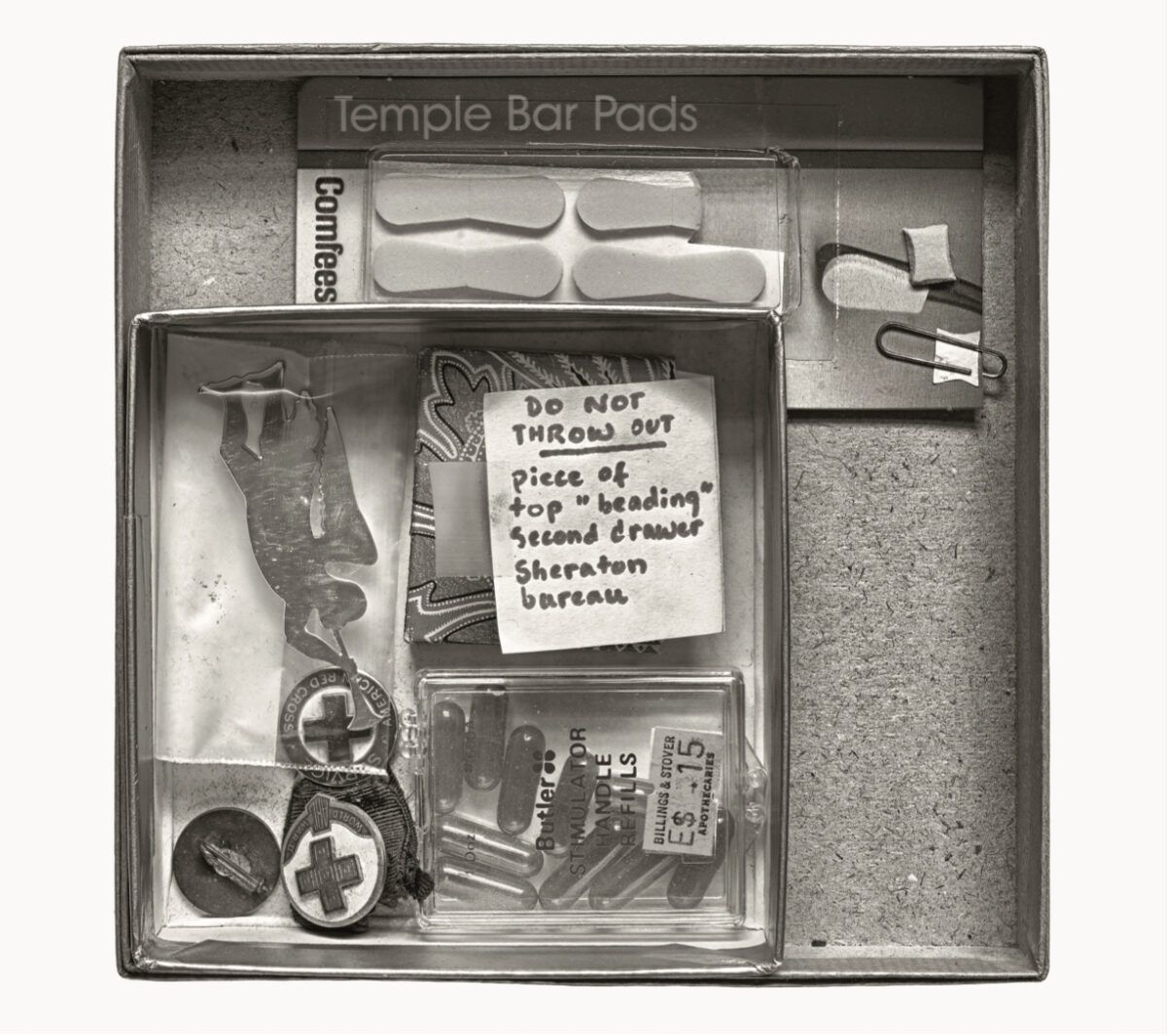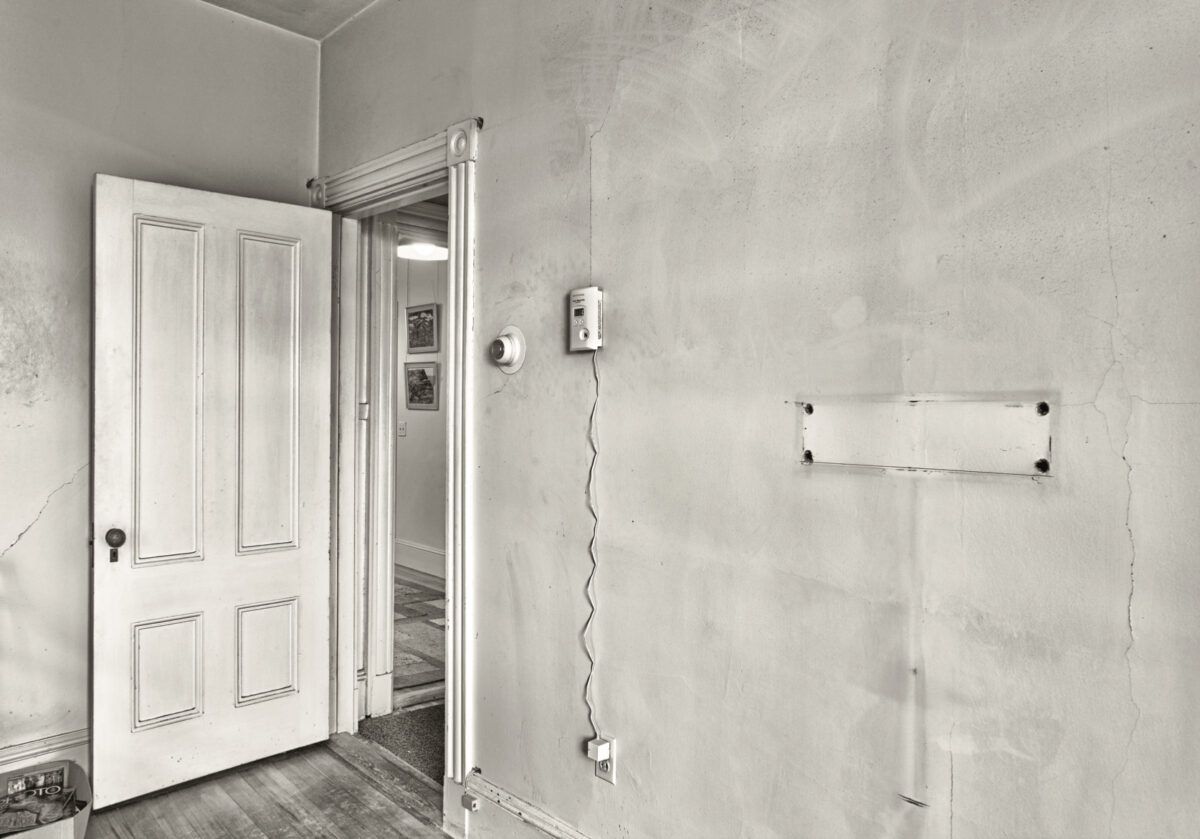blog
Book Review: As I Found It. My Mother’s House by Russell Hart

Hatpins, Stars, and Lockets © Russell Hart
Russell Hart’s As I Found It. My Mother’s House is a poignant visual exploration of memory’s fragility and the devastating impact of dementia. Through a collection of intimate photographs, Hart delves into the center of his mother’s fading identity, capturing the remnants of her life scattered across her home. These images serve as a poignant reminder of the passage of time and the impermanence of human existence. However, Hart’s restrained documentary style allows readers to project their own experiences onto his visual narrative, fostering a sense of empathy and shared understanding.
“While the images in this book are documentary, these images are more personal than any I’ve ever made. They are more about my own life and family than being just documentary images,” Hart writes. “My hope is that this body of work connects to the experience of anyone who has dealt with the decline of parent’ physical and mental health, and connects to the way in which that struggle revisits and reinvents the meaning of family.”

Buttons, Codeine, and Pumpkin Seeds © Russell Hart

Mom’s Key Pouch, Dad’s Wallet, Scrap Leather © Russell Hart

Florie’s Leash and Collars © Russell Hart
By comparison, the majority of Hart’s published work I’ve seen is not inwardly personal in nature. It’s more toward the pictorialist end of the spectrum, or straight documentary reportage style. His colorful, vibrant views of nature and majestic landscapes are sweeping and dramatic. His images exhibit a high degree of consideration toward formal composition, and he demonstrates careful consideration toward the people he includes in his images from India and Greece. His decades of experience in arts education and publishing undoubtedly informed his creative approach and the introspective nature of this project as well. Harts images in ‘As I Found It’ are all black and white photos shot with available light. Carefully composed time capsules are displayed along with interior views of the house. A wonderfully shot interior of the garage kept my rapt attention. I am enviously looking at something akin to a Walker Evans or Russell Lee image, and couldn’t look away for quite a while.
While absorbing this book, I reflect on the ideas Hart mentions in his statement above: struggle and decline, erosion of a person’s sense-of-self over time, and efforts to preserve. I’m not sure I found the path to understanding how dementia ‘destroys identity’ in this book. Maybe I just need more time. I do recognize that Hart’s cathartic process of documenting contents of his mother’s house is a testament to his effort to better understand both her and himself. There’s a sense of melancholy, and sentimentality, and longing for understanding here. Each viewer brings a different experience to the table, but one aspect for me was discovering the unseen value which can be found in surprisingly sentimental actions. I’ll hold on to that feeling; hopefully it will be useful someday.

Unidentified Keys © Russell Hart

Do Not Throw Out © Russell Hart
I believe Hart shows us the personality and identity of his mother through evidence of her habit of collecting, curating and cataloging objects of significance to her. For instance, in one image we see a beautiful open desk with quartersawn, tiger oak wood surface covered with a small pile of opened and unopened mail, multiple small boxes containing different types of pens and pencils, paper clips, assorted keys, labels, tape, rubber bands, several different rulers, newspaper clippings, a match book, white rubber tips used on the tip a cane or ironing board legs perhaps, Ziploc bags that contain fabric of some sort, spiral notebooks, an opened package of shoelaces, a hole punch, a dirty ashtray and an envelope labeled “seed necklace” in tidy, cursive handwriting.
A place for everything and everything all over the place. It’s beautiful after I take it all in. All these items were handled and placed there by his mother. She tended to them, organized and arranged them, albeit in a helter-skelter fashion, but items are in purposeful zones of meaning, purpose or importance. These drawers full of curiosities made perfect sense to Hart’s mother, yet to the casual observer these collections probably look more like a lost-and-found box at the airport. Anything and everything imaginable, all in the same small space, is waiting to be reunited with its owner.

My Mother’s Bedroom After I Moved Her Downstairs © Russell Hart
Hart writes in the book that his “first step was to photograph the interiors that were so familiar to me as I emptied then of their life.” I found this juxtaposition interesting. Hart’s mother no longer lived in the house when he started the project. She was living in a “memory care” facility during this time period. The home’s sole population was gone, yet Hart equates removing the collection of objects as being ‘the life that is leaving the house’. Perhaps this is where I should be drawing inference about the destruction of vibrance and life, or even identity. Hart mentions the Japanese phrase ‘mono no aware’ in his text. The term means “an empty toward things.” A poignant memento, a cultural knickknack, or an item so intimate and evocative that it has a personality all its own. Preserving a meaningful possession by photographing it hopefully extends its life and also the memory of its owner. The photo becomes a story about this anonymous person, often gilded with tinges of melancholy and poignancy. These objects, these things on view were meaningful to Hart’s mother and are a reminder of who she was and the type of person she was. Thus, her life was meaningful as well.

Where My Father Died © Russell Hart

Use Only for Hand Basting © Russell Hart

Matisse in the Garage © Russell Hart
Heart’s book allows us as unimpassioned observers to explore his mothers life. We get to examine items which were probably never supposed to be viewed by another person. Through this vulnerability, each treasured keepsake no matter how seemingly trivial, provides an insight. The book draws to a close with Hart’s final image: His mother’s note to herself that he found shortly after she left the house. The torn scrap of paper folded onto itself is a cryptic collection of marks and scribbles. Indiscernible words on the page are in stark contrast to the tidy notes tucked into boxes that we’ve seen throughout the book. Hart’s book presents the broader idea of what it means to be human. These peculiar scenes, with their disjointed line of connection and meaning, remind us that when a life comes to an end, it does so with all our loose ends left to be untangled.
::

As I Found It. My Mother’s House by Russell Hart
Texts by Russell Hart
Designed by Ernesto Aparicio and Kehrer Design (Laura Pecoroni)
Hardcover 27,9 x 29,2 cm
96 pages
58 duotone illustrations
Published by Kehrer Verlag
::
Russell Hart is an American photographer, writer, and educator based in Virginia, whose career spans several decades. His work has been featured in prestigious galleries and museums such as the DeCordova Museum, The Boston Museum of Fine Arts, and the Griffin Museum in Massachusetts. Hart has won several awards in the field of photography, photography writing, and criticism, and has served as an editor at American Photo magazine among other photography publications. He is also the author of influential books on photography. Explore his work on his website: http://www.russellhartphoto.com and on Instagram: @russellhartphoto
Location: Online Type: Black and White, Book Review, Family
Events by Location
Post Categories
Tags
- Abstract
- Alternative process
- Architecture
- Artist Talk
- artistic residency
- Biennial
- Black and White
- Book Fair
- Car culture
- Charity
- Childhood
- Children
- Cities
- Collaboration
- Community
- Cyanotype
- Documentary
- Environment
- Event
- Exhibition
- Faith
- Family
- Fashion
- Festival
- Film Review
- Food
- Friendship
- FStop20th
- Gender
- Gun Culture
- Habitat
- Hom
- home
- journal
- Landscapes
- Lecture
- Love
- Masculinity
- Mental Health
- Migration
- Museums
- Music
- Nature
- Night
- nuclear
- p
- photographic residency
- Photomontage
- Plants
- Podcast
- Portraits
- Prairies
- Religion
- River
- Still Life
- Street Photography
- Tourism
- UFO
- Water
- Zine

Leave a Reply